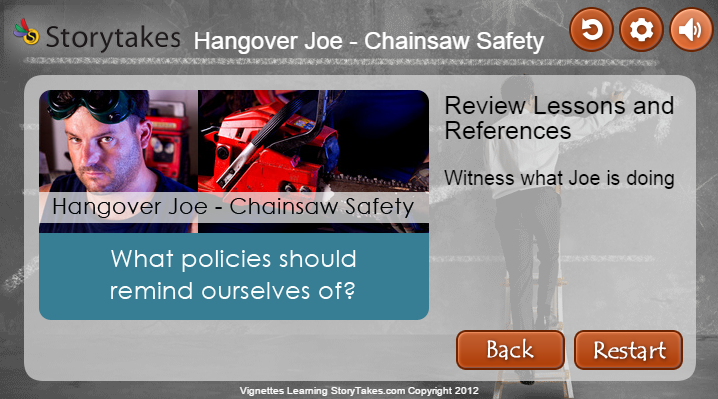Mark Twain has been credited with saying:”If I had more time, I would have written a shorter letter.”

It’s ironic that it may take a little more time and care to get content, such as a letter, reduced to its essentials. The challenge, then, in developing learning is what should be in your small bites content. How do you create these smaller chunks of learning?
What is Small Bites Content?
Small bites content is small, standalone, useful and accessible content. More importantly, it is learningcontent needed instantly for a micro task or activity at work.
Types of content can be a single word, emoji, a sign, a single image or series of works and ideas [L1] (Hug, 2007). For our discussion, we focus on a series of words and images that help learners to learn a single unit of content.
Learners Consume
In this age of shorter attention spans, multi-tasking, big data and the increased speed of business, the demand for small bites learning is growing. The cautionary question from a learning designer’s point of view is “How small should the small bites be to ensure that learners learn?”
This is a biased question. It assumes that small bites content must be constructed to help learners. The other, more productive side to this questions is, “How do learners actually use small bites content to perform on the job?” It presumes that the learner consumes the small bites content; therefore, the learner is the decision maker regarding the usage of small bites content.
Pay Attention to How Learners Consume Content
The size of small bites content is defined by the way learners consume content. Most likely, this takes place while they’re on the job and trying to complete a task. Designers, on the other hand, want to think oflearners being in a formal setting, such as a classroom during eLearning, within a controlled environment. “My Tasks Now” – Content Should Include Diagnostic Headers and Footers
“My Tasks Now” – Content Should Include Diagnostic Headers and Footers
“My Tasks Now” mode is a diagnostic process. Learners and workers are trying to analyze the requirements, problems and opportunities surrounding their tasks. When the learners are faced with the tasks, they ask diagnostic questions (Schank, 2011).
These questions include:
- What’s the outcome?
- What do I know about this?
- How should I proceed?
- How would I know it is done right?
By asking these questions, learners are calculating in their minds what the content is, how much there is and when and where to get it. Finally, how should they apply the content? Depending on the learners’ experience and the complexity of the tasks, they may already have the skills and knowledge needed to apply to the tasks at hand. Let’s call them the confident learners.
On the other hand, if you have some less confident learners who want to learn more, they proceed to think through their experiences and/or try to recall prior experiences and knowledge. In this instance small bites content becomes invaluable. To be of maximum use, small bites content must contain diagnostic headers and footers.
What are diagnostic headers and footers? They are elements of the small bites content that address the four diagnostic questions. They trigger the automatic, instant and unconscious mental skills that aid people to survive, cope and succeed in everyday life. Essentially, these are self-efficacy requirements of learning (Bandura, 1986).
Diagnostic headers (before the content)
1. What’s the outcome?
2. What do I know about this?
3. How should I proceed?
Diagnostic footers (after the content)
4. How will I know if it’s done right?
“Just Enough Content” – Content Covers Basics, Gaps and Insurances
The less confident learners with only some exposure to and experience with the tasks at hand may need a lot of knowledge, skills and practice. The classic solution is to train them on the entire scope of the content to ensure they have the knowledge. The trouble with this thinking is that learners may not recall the knowledge later, or have not had the opportunity to apply or practice the skills needed.
So, the functions of the header and footer are to help the learner recall prior knowledge and skills. And at this point, answers to the header questions show learners the knowledge and skills they may need. This content – knowledge and skills – is just enough to immediately satisfy learners and help them do the tasks.
Just Enough Content Questions
1. What is the basic element, function, feature, operation, or other similar items?
2. What is the gap? When does it fail or succeed?
3. What is the insurance, “must-do” or “fail-safe” action to make sure it works?






Summary
Small Bites Content uses a combined structure with diagnostic questions, headers, footers, embedded content and is delivered through an organic story. Small Bites Content is inherently short, a small learning point and a standalone, which allows learners to act on the content, even if the content is on a micro level.
Notes
Theo Hug (Didactics of Microlearning: Concepts, Discourses and Examples Nov 2007) describes various levels of micro content. He illustrates that macro learning can be achieved by different levels of meso learning including micro learning.
Roger Shank (Teaching Minds: How Cognitive Science Can Save Our Schools Oct 28, 2011) defines the action of diagnostic is learning action. Diagnosing is an effective learning mode.
Albert Bandura: Self-Efficacy: The Exercise of Control Paperback – February 15, 1997
I’d love to hear your thoughts! Let me know what you think in the comments section.
Ray Jimenez, PhD
Vignettes Learning
“Helping Learners Learn Their Way”
